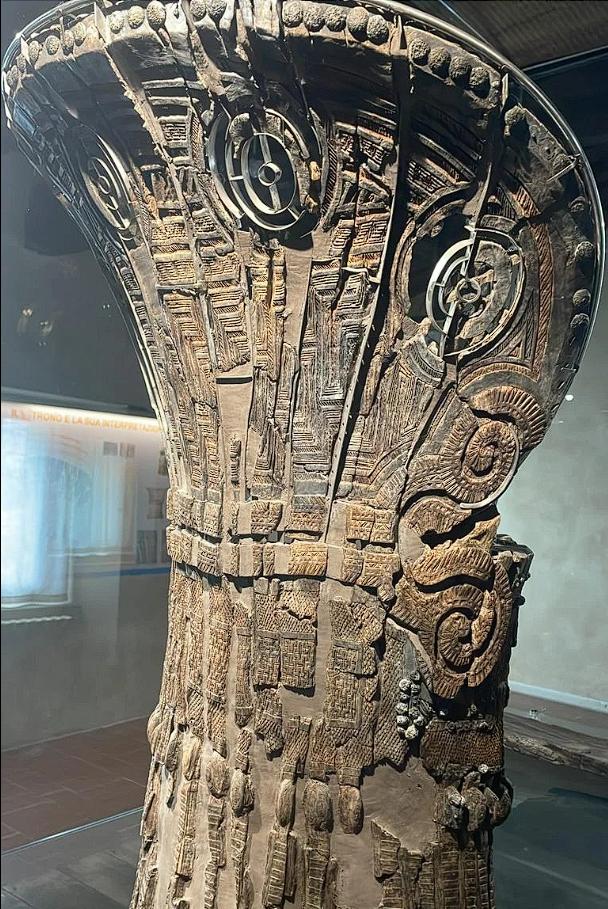The Villanovan Wooden Throne: A Glimpse into Ancient Italy’s Artistic Heritage
A remarkable wooden throne, crafted over 2,700 years ago, offers an extraordinary insight into the art, culture, and social structure of the Villanovan civilization. Dating back to 725–701 BC, this magnificent throne was discovered in a tomb at Verucchio, Italy, and is believed to have belonged to a high-ranking individual within the Villanovan society, providing a direct link to Italy’s ancient past.
Intricate Carvings and Artistic Traditions
The throne is adorned with intricate carvings and geometric motifs, showcasing the distinctive artistic traditions of the Villanovan people. Known for their craftsmanship, the Villanovans thrived between 900 and 700 BC, and their art reflects a sophisticated blend of functionality and symbolism. These geometric designs not only served as aesthetic embellishments but also likely held significant cultural and spiritual meaning for those who created and used them.
The throne’s well-preserved condition suggests it was an object of great value, possibly part of a larger set of furniture used by the elite members of Villanovan society. The precision of the carving techniques highlights the high level of skill possessed by ancient Italian artisans, while the throne’s material—wood—demonstrates the resourcefulness of the Villanovans, who crafted lasting works from readily available materials.
A Symbol of Power and Prestige
Standing at approximately 1.5 meters (5 feet) in height, the throne is a striking reminder of the social structures and hierarchy that defined the Villanovan culture. As a highly valued object, it likely symbolized the power, prestige, and status of its owner. Thrones such as this one were not only functional pieces of furniture but also served as important ceremonial symbols of authority and influence within the community.
The Villanovan Legacy: Preserved for Future Generations
Today, the throne is on display at the Civic Archaeological Museum of Verucchio, where it continues to fascinate both visitors and scholars alike. As one of the best-preserved artifacts from the Villanovan period, it offers a tangible connection to the ancient civilization that once flourished in Italy. The throne’s intricate design and storied history serve as a testament to the skill and cultural sophistication of the Villanovan people, whose legacy continues to be explored and appreciated in the modern era.

CÁC TIN KHÁC
Mary Walton: The Forgotten Inventor Who Helped Clean Up America’s Cities
Tomb of Queen Nefertari in the Valley of the Queens, Egypt
Discover the Hypostyle Hall of the Temple of Hathor at Dendera
Venus de Losange: Unveiling the Mystery of a 20,000-Year-Old Paleolithic Icon